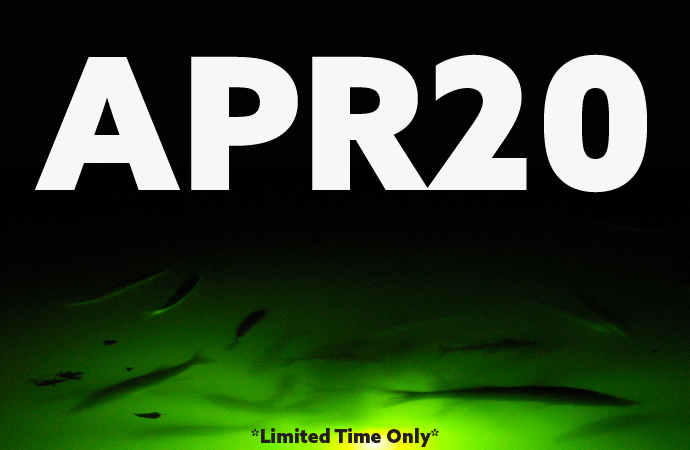Why Underwater Fish Lights? The Science of Fishing By Light
Since the dawn of time, man has fished. And pretty soon, man realized fish had certain preferences. They favored certain places, had certain behaviors. And they hung out where the food was.
Over time, man discovered that certain things could stimulate a fish into eating. One of those things was light intensity — the kind of light changes that typically occur at dusk and dawn. Fish that fed by sight were more active feeders by day. Fish that tended to rely on other senses like smell or taste tended to be night feeders, but when an area was well lit, they seemed to want to eat anyway. And so began the practice of fishing utilizing light.
Marine biologists have developed a theory called optimal foraging. Based upon this theory, fish will search for the most amount of food requiring the least amount of energy expenditure on their part. In other words, fish will look for the most quantity of food that is the easiest to get.
Fishing with light comes at this from all angles. Adding light for visual fish to see its food — plankton and baitfish — artificial lights allow for that extra illumination for sight feeders like tuna to simply see their prey better at night. And for the fish that have multi-sensory capabilities, like dolphins and sharks, underwater fish lights mean an easy meal in one place and may just be less effort and more precise to hunt visually if provided an abundant source of food in one place.
So why are the bait fish and plankton more active in the light? Plankton rely on light for reproduction. They also feed on phytoplankton that need sunlight at the surface to grow. It’s surmised plankton feed at night out of sheer self-preservation but it could simply be that plankton are motivated by their own internal time clock. Once light is introduced, however, small fish can now see the feeding plankton. This, then, draws the small fish into feeding. Then, up the food chain we go with the larger predators finally coming over for a nice little feast.
In the good old days, fishing lights may have meant a simple lantern hung over the side of the boat. But today, we have technology that gives us our modern underwater fish lights. We now know that the colors green and white, blue in saltwater, are the ones most attractive to plankton and baitfish alike.
It is a simple case of cause and effect. Light attracts food. Fish like food that is easily accessible. Fishermen like fish that are plentiful in one place. Hence, submersible lights used for night fishing make for happy fishermen!
With new underwater fish lights, fisherman have the ability to mimic feeding conditions for the optimum in baitfish attraction. At Underwater Fish Light, our state-of-the-art submersible lights have been time-tested by professional, commercial, and recreational fisherman. Let us show you how you can increase your night catch with the addition of submersible lights in both fresh and salt environments.




